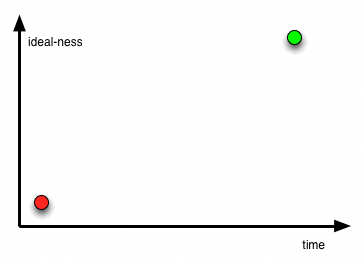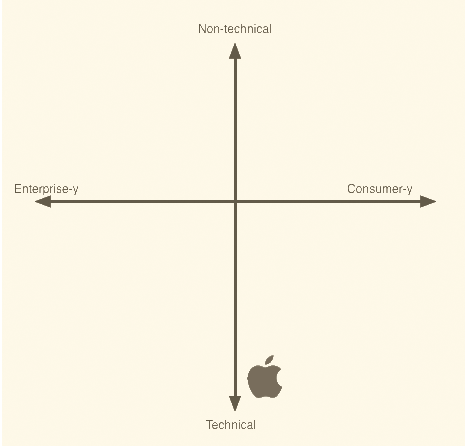Zig and zag, but know where you're going
Many, myself included, fear making career moves that might move us a little away from our "path," if we even know what our path is. Talk to anyone more experienced than you - even the best of career plans change dynamically over time, and you need to roll with the punches.
Why it's important

I guess it would be nice, but it would also be boring…
It would be nice to have our career progress in a straight line. This was how it worked for our parents and grandparents. You join a company, put in your hours, and move up the ladder. Your end-point is clear right from the beginning, and you're happy with that.

pay attention and you'll avoid this: wandering and trying to get to a goal, only to realize you want something completely different when you get there…
For better and worse, things have changed. You don't know exactly what your destination is, so how can you know exactly what your next step is?
Even if you have somehow divined the mystical truth of your career's future, odds are that you won't get that perfect job when you want it.
We live in a time of too many opportunities, and exploration is fun and rewarding. But retaining your sense of direction is important. You might not know exactly where you're going just yet, but having direction will help you pick the right opportunities; if you pay attention, you'll learn more about yourself and your path along the way.
How it works
There's a couple of ways of mapping out your zigs and zags. Here's how I do it:
- Draw two axes. Which pair you pick will depend a lot on your situation and how long-term you're thinking. Ideas for axes include salary, reputation, time, people-centric, creative, management-centric, strategic, analytical. You can always make more graphs later if you want.
- Put down a dot for your starting point. Where did you begin? We all start somewhere.
- Put down a dot somewhere near your 'end point'. Remember: this isn't set in stone; it's there to provide direction.
- Put down your intermediate dots, if you have any. Jobs, internships, projects. Anything significant enough to you to be marked, should be marked.
- Connect the dots. The easiest part. I recommend connecting them in time order.
- Reflect. The hardest part. Some questions to help: Are you on track? How do you feel about your end point? What are some potential next steps?
- Keep this with you. When you see new opportunities come up, bust out your chart: Where would that new opportunity fall? Does it bring you closer to your end point? When you've worked in a new role for a while: has your endpoint shifted?
A personal story

my zigs and zags as I get closer and closer to finding my "sweet spot." the yellow region represents territory that I think is interesting. the journey so far ends with Disqovery
If you remember from my visioning exercise, I had a rough sense of where I wanted to go, but there were still a few unanswered questions about how to explore. I spent some time thinking about my career moves so far, and I realized that going to Anheuser-Busch InBev was exactly what I needed to move closer to my goal. I'm happy here at Disqovery - we'll see how it changes in 10 years.
Straight lines are boring.
We here at Disqovery want to help you think about these issues with our app. If you're interested in this space, drop us a line. You can sign up for our closed beta on this page or check us out at disqovery.com.